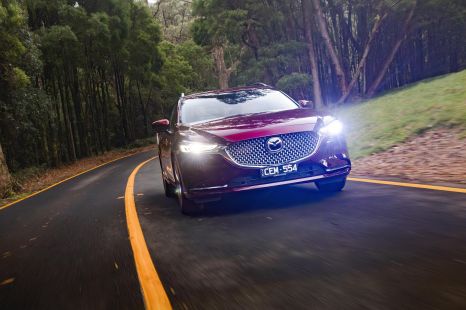

William Stopford
Every car discontinued in Australia in 2025
5 Hours Ago
Is the four-cylinder Ford Mustang 2.3L High Performance really worth considering? If you don't need the V8 soundtrack, it could well be.
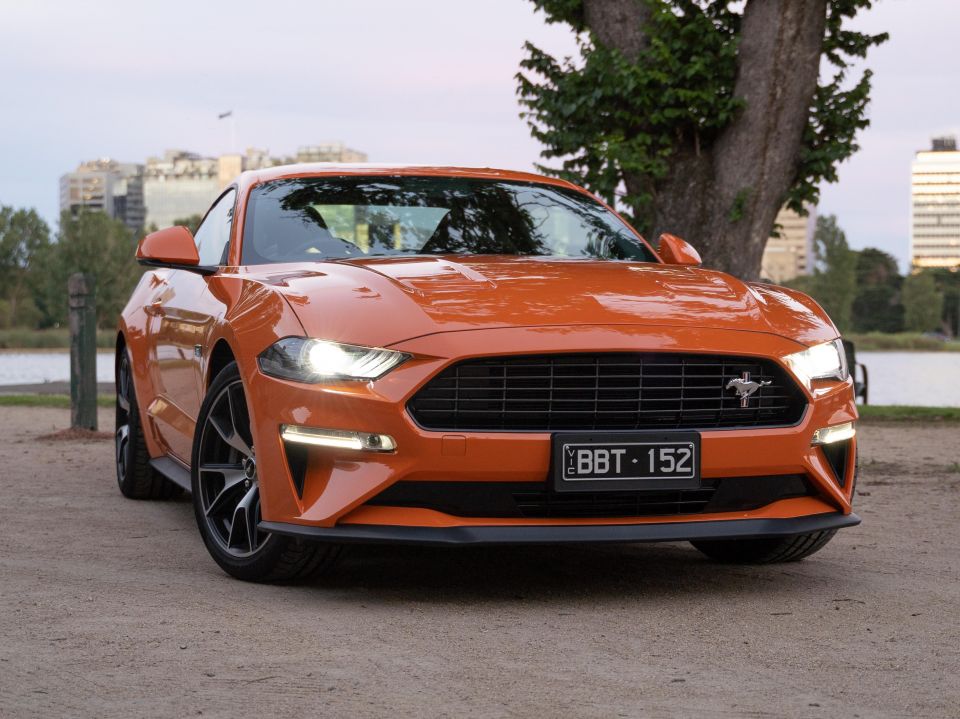
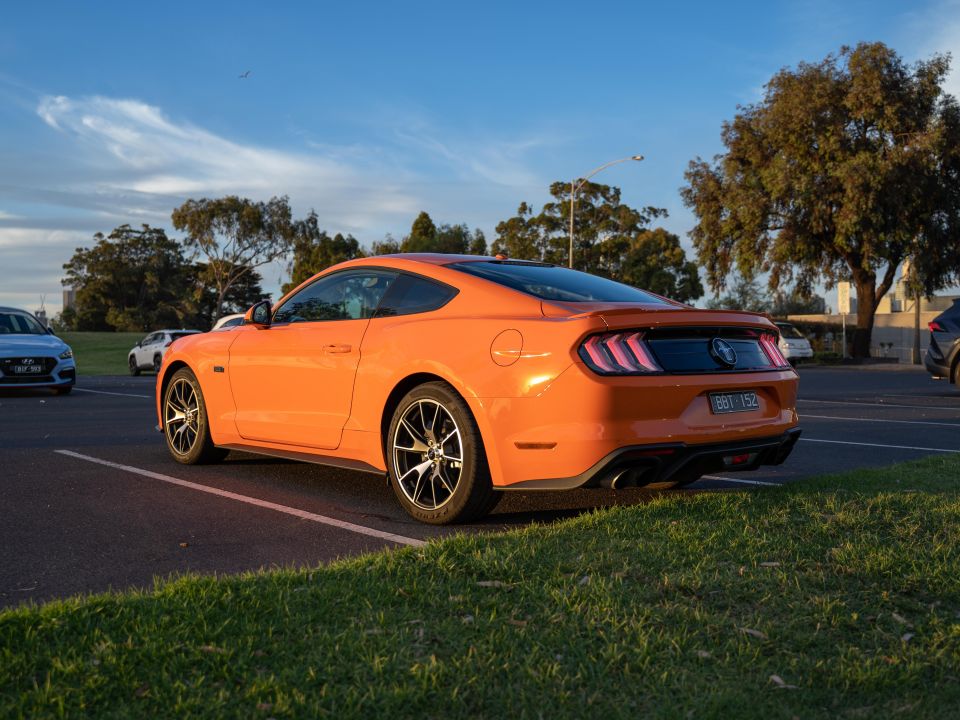

Marketplace Editor
New from
$60,990
excl. on-roads

Marketplace Editor
New from
$60,990
excl. on-roads


Marketplace Editor
New from
$60,990
excl. on-roads

Marketplace Editor
New from
$60,990
excl. on-roads
Quickly see how this car stacks up against its competition. Select any benchmark to see more details.
Where expert car reviews meet expert car buying – CarExpert gives you trusted advice, personalised service and real savings on your next new car.
There are some iconic combinations that you just shouldn’t mess with. Thelma and Louise, gin and tonic… then there’s the Ford Mustang and a V8.
Many will argue an entry-level 2.3-litre turbocharged four-cylinder engine has no place in the Mustang line-up, though the fact Ford persists with the blown four-banger means it must know something we don’t.
Sure, the 2.3-litre turbo lacks the gorgeous, naughty burble of the GT’s 5.0-litre V8, but other than what’s other the bonnet it’s almost identical in terms of looks and specification, while using less fuel and costing $13,000 less.
Is there a place for a four-cylinder ‘Stang?

The four-cylinder Mustang 2.3L High Performance starts at $50,990 before on-road costs with the standard six-speed manual transmission, or $53,990 before on-roads for the 10-speed automatic on test.
You can also get a convertible version starting at $60,290 list, which is auto only.
Should you want a V8 heartbeat you’ll need to find a touch less than $13,000 – that’s despite standard equipment being largely identical.
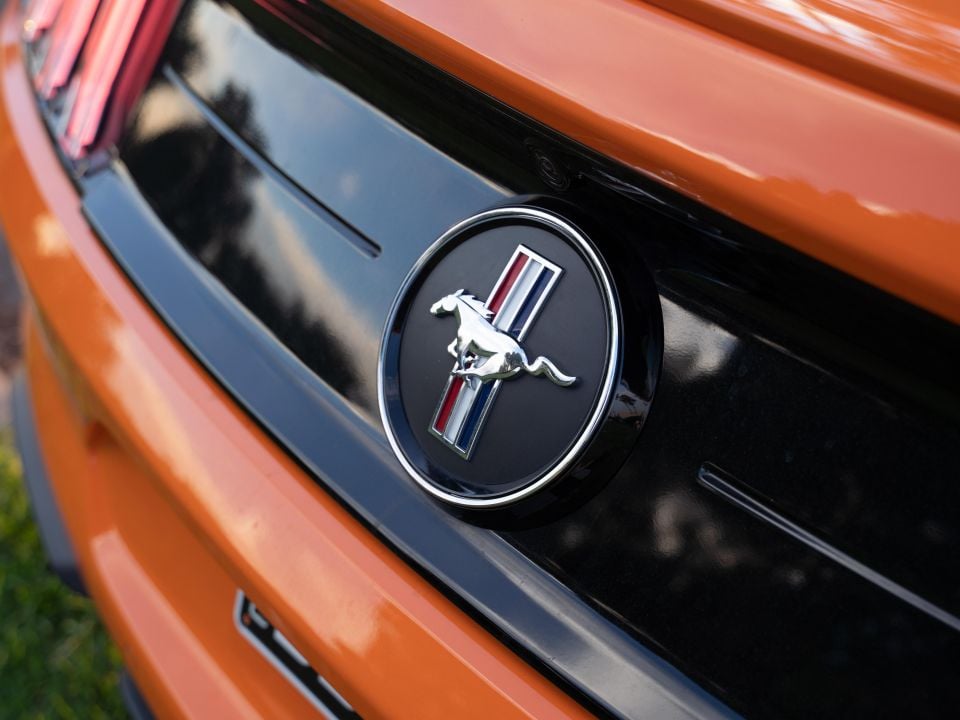
Direct rivals for the Mustang are few and far between in Australia, given there’s no Chevrolet Camaro offered Down Under and conceptually-similar Euro rivals cost tens of thousands more.
At the mainstream end of the sports car market, the rear-drive four-cylinder coupe layout is offered by the smaller (and ageing) Toyota 86 GTS (from $37,380) and Subaru BRZ Premium (from $40,080), while the closest mainstream competitor would have to be the almost ancient Nissan 370Z (from $50,490).
With the limited number of alternatives with the Mustang’s level of desirability and specification, you can see why it’s been Australia’s top-selling sports car since launch in 2015.
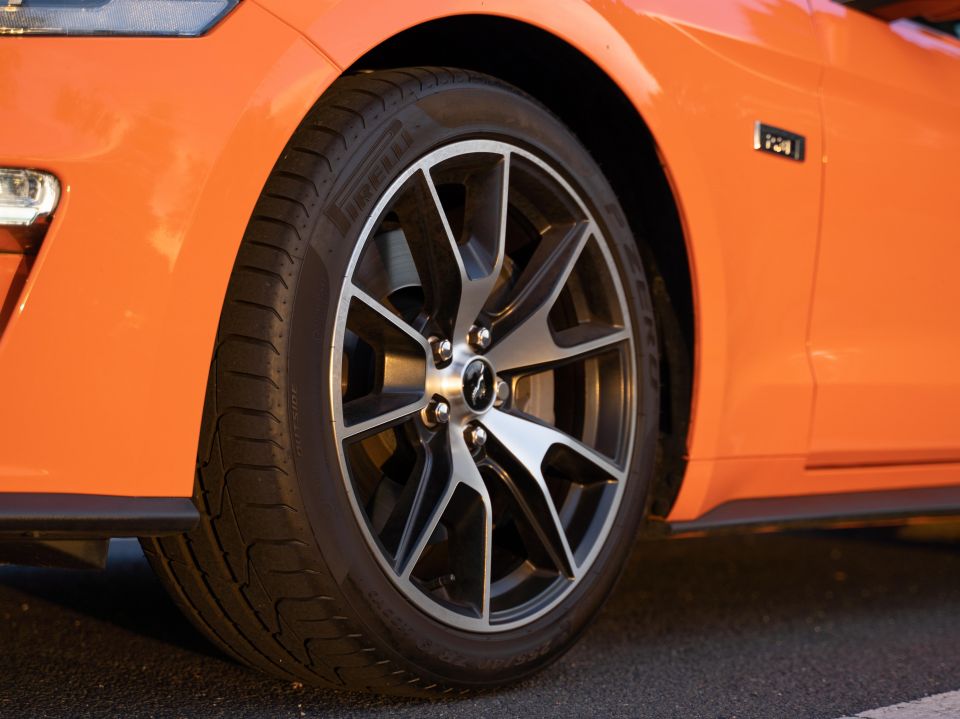
Buy your new car without the stress. It's fast, simple and completely free.

Great service from Travis and team, second time I have used this business would not hesitate to recommend them to anyone
Craig C.
Purchased a Ford Ranger in Sunshine Coast, QLD
CarExpert helped Craig save thousands on his Ford Ranger, now let us save you on your next new car.
Find a dealThe Ford Mustang High Performance and Mustang GT come standard with the following features:
MagneRide adaptive suspension is optional on all Mustangs ($2750), while Recaro front sport seats ($3000, de-selects heating and cooling) are optional.
Our test car’s Twister Orange premium paint is also $650 extra.
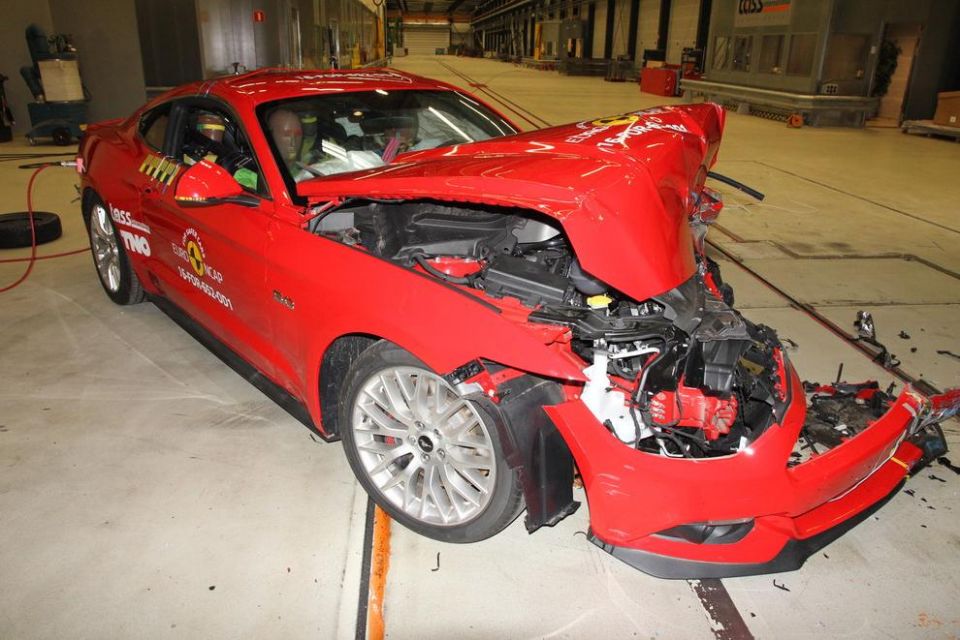
After a two-star result for the pre-facelift model, the current Mustang wears a three-star ANCAP safety rating with 2017 date stamp.
This rating is based on an adult occupant protection score of 72 per cent, child protection score of 32 per cent, pedestrian protection rating of 78 per cent, and 61 per cent for safety assist.
It’s worth noting that three-star rating only applies to coupe variants, convertible models remain unrated.
All three grades of autonomous emergency braking (City, Interurban & Vulnerable Road User) are standard, as well as lane keep assist (LKA) with lane departure warning (LDW). Advanced seat belt reminders are fitted to both front seats but not the rear.
Dual frontal, side chest and side head (curtain) airbags are standard, as are knee airbags for the driver and front passenger.
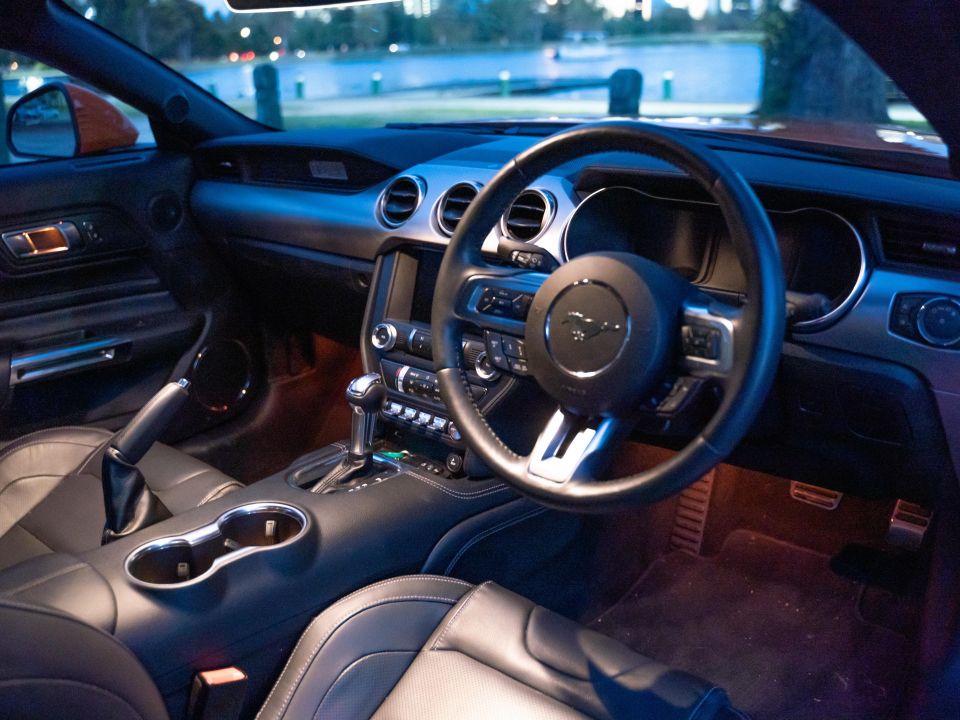
Not much separates the 2.3L High Performance and the GT inside bar a couple of small details.
You’ll notice a build plaque on the dash ahead of the front passenger, and really that’s about it. It’s otherwise standard Mustang fare.
A mid-life refresh brought about more soft-touch surfaces – leatherette surfaces and contrast stitching for the centre tunnel and door tops – complementing the existing soft-touch dashboard elements.
However, that’s not to say the Mustang breaks stereotypes about the quality of American-built cars.
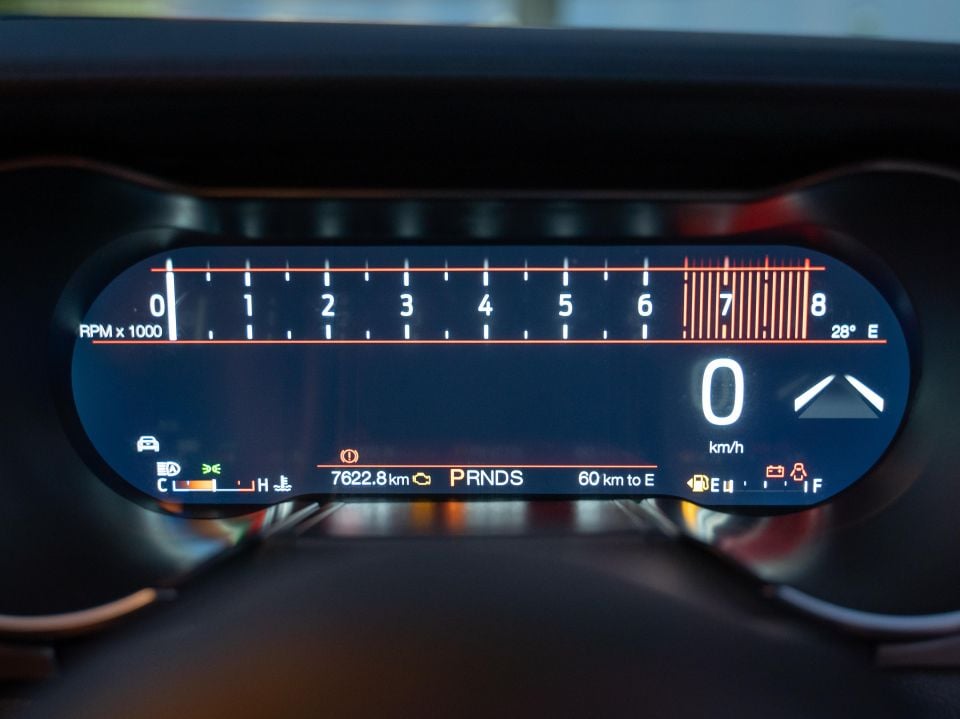
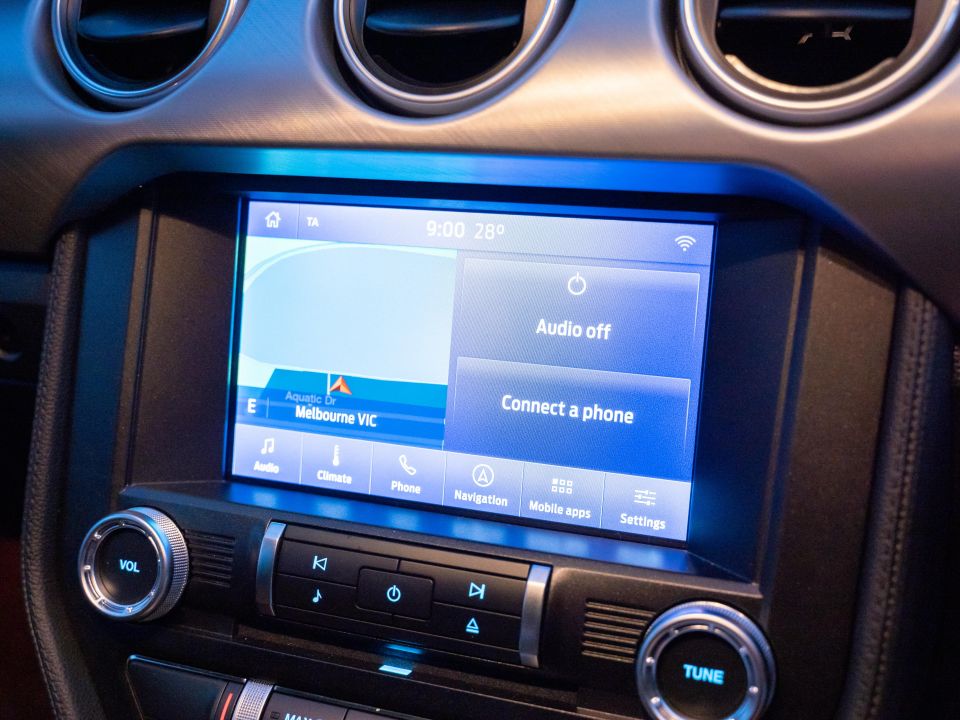
A number of trims squeaked or rattled in our tester, including the Recaro bucket seat and the plastic around the instrument cluster. It’s not unique to this vehicle either; just about every Mustang I’ve ever driven has had something similar. No deal-breaker, but worth noting.
We also found some of the switchgear a little plasticky, namely the toggle-style switches for the drive mode, steering mode, and hazard lights. They may look like metal, but they ain’t.
Up front, we love the 8.0-inch Sync 3 touchscreen, which features wired Apple CarPlay and Android Auto, as well as inbuilt satellite navigation. FordPass Connect hasn’t quite made it to the Mustang yet, but the car should get remote app and online functionality later this year.
The 12-speaker B&O Play premium audio system is also good, complementing the simple, slick infotainment interface with clear, deep sound that can really thump through the cabin if you turn up the bass.
We also love the 12.0-inch configurable digital instrument cluster – particularly Race mode with its horizontal rev counter – which is where you access the various exhaust modes and other vehicle settings (louder is better).
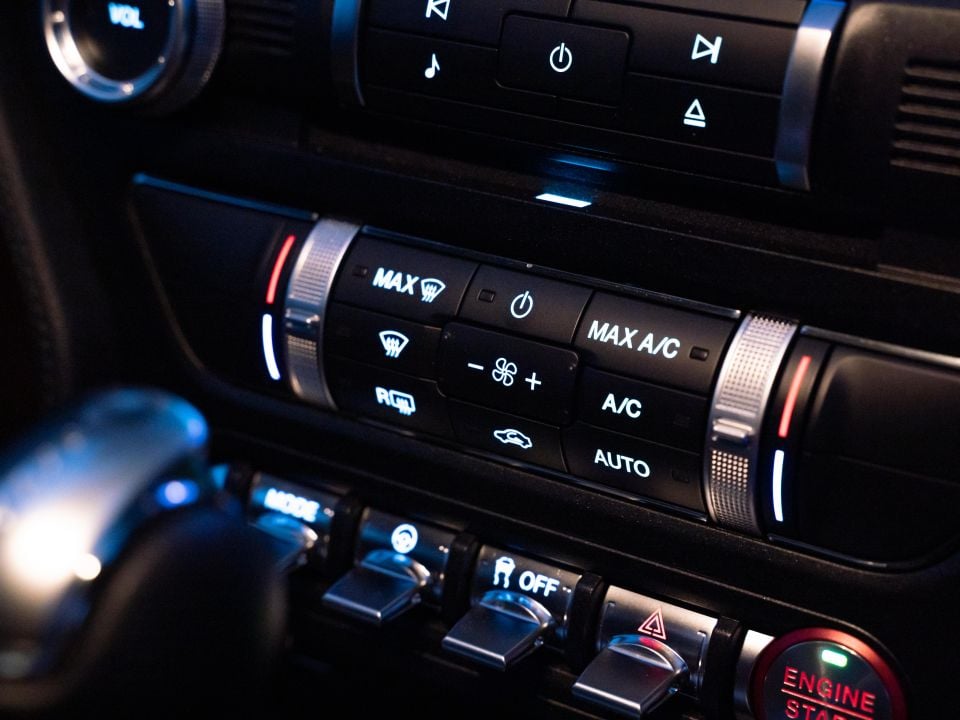
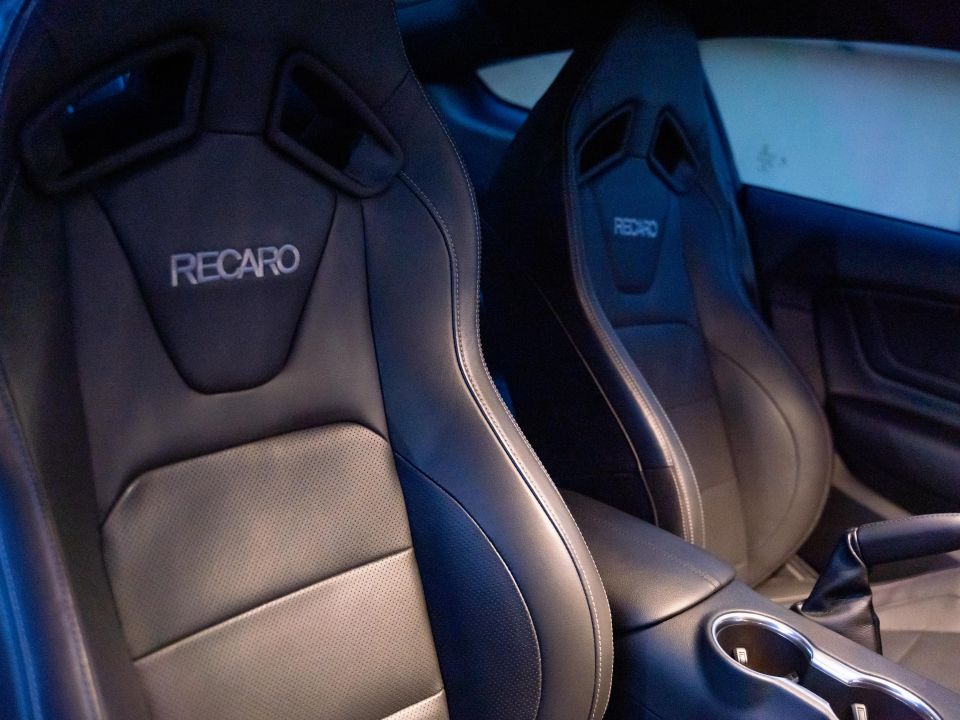
Comfort up front is fine in the optional Recaro buckets, though being race-style pews they don’t cosset you the same way the standard chairs do. What they will do is hold you firmly in place when driving a little more purposefully. Plus, they look ace.
Storage is fairly limited, keeping in mind this isn’t really a family car. The cupholders are positioned where the driver’s elbow should rest – not so much an issue in our automatic but awkward for manual drivers – and the shallow shelf below the centre stack and skinny door bins mean there’s not a lot of space to store your phone or large bottles.
The cubby under the centre armrest goes some way to counteracting that, as it’s fairly large and houses your USB connections, and the glovebox is decent enough.
In the second row there’s not a whole lot to talk about, other than that it’s designed with much smaller humans in mind.
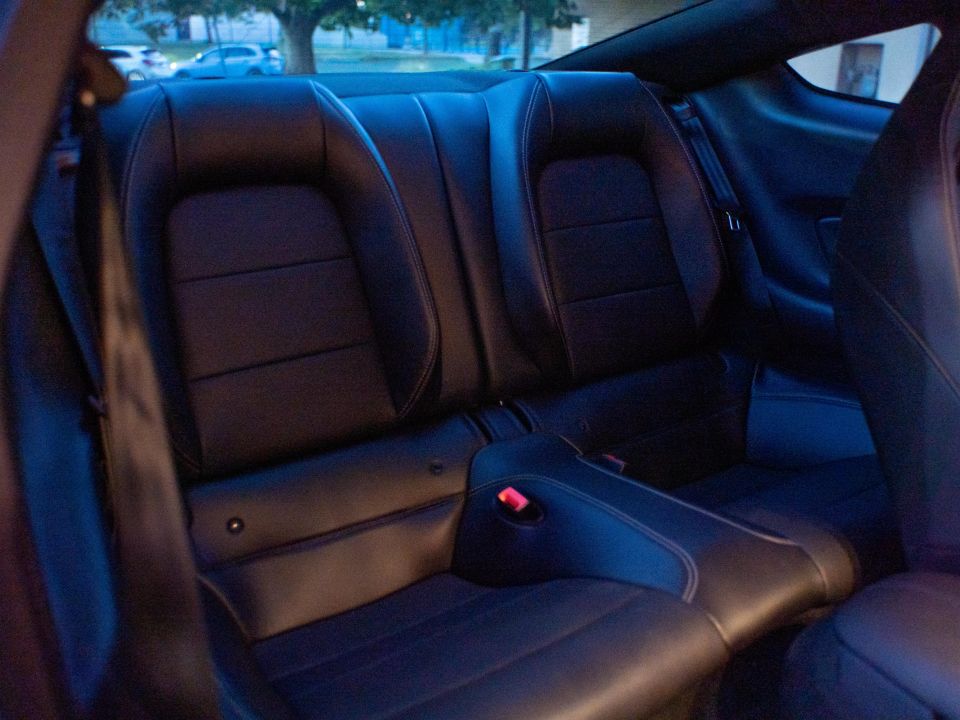
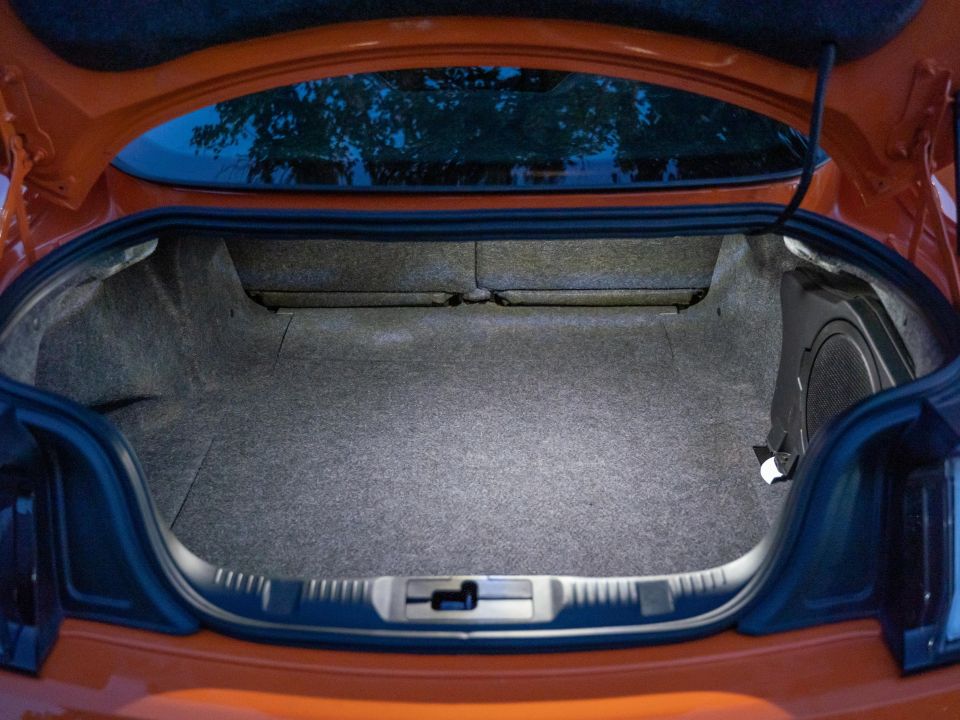
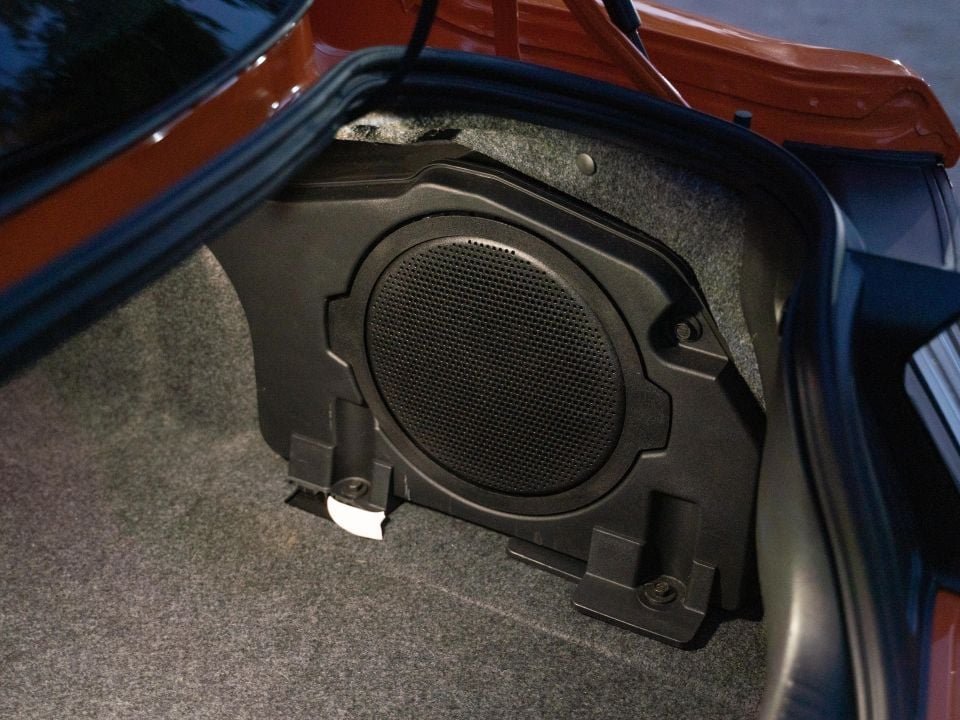
Limited headroom will see taller passengers wedging their head against the rear glass, and there’s not much legroom behind a taller driver like myself.
There’s ISOFIX mounts for two child seats, though the 32 per cent child occupant score awarded by ANCAP and Euro NCAP would make me think twice about putting my kids back there on more than a semi-regular basis.
Further back again, there’s a surprisingly large 408L boot which will carry everything from golf clubs to luggage for a weekend away, and if you need to carry longer items the rear seats fold in a 50:50 ratio.
Under the boot floor there’s a space-saver spare wheel.

The Ford Mustang 2.3L High Performance is powered by, you guessed it, a 2.3-litre turbocharged four-cylinder petrol engine based on the motor from the previous-generation Focus RS hyper hatch.
Outputs are rated at 236kW (@6200rpm) and 448Nm (@3800rpm). Our test car drives the rear wheels via a 10-speed automatic and limited-slip rear differential, though a six-speed manual is the standard transmission.
Ford Australia doesn’t quote an official 0-100km/h time or top speed, though we’ve seen reports of between 5.5 and 6.0 seconds. Not bad.
Meanwhile, official fuel use is rated at 9.6L/100km on the combined cycle with the auto, with 95 RON premium unleaded required as a minimum.
During our week with the four-pot ‘Stang, we saw an indicated 9.9L/100km over 555 kilometres of mixed driving – you’ll easily see mid-teens in the GT. The fuel tank measures 59L.
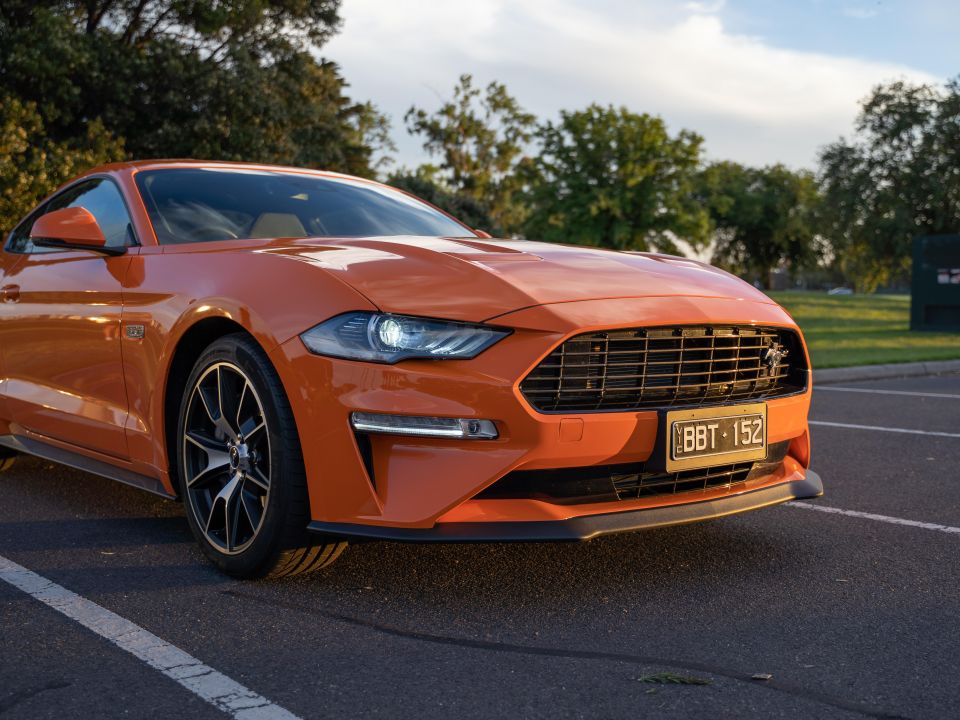
If you’ve already driven a Mustang, you will be familiar with the vehicle’s core attributes: it’s a big, comfortable, quick 2+2 regardless of powertrain.
Fire up the engine and you are greeted with a high-pitched, almost trumpety exhaust note that takes a little getting used, but has a distinct character that’ll grow on you. It sounds even better when you flick the exhaust into its loudest Track setting.
Unlike most modern turbocharged engines, the Mustang 2.3L High Performance doesn’t generate peak torque until 3800rpm, so it likes to rev out but in doing so it’s quite linear and progressive in its power delivery rather than feeling boosty and laggy.
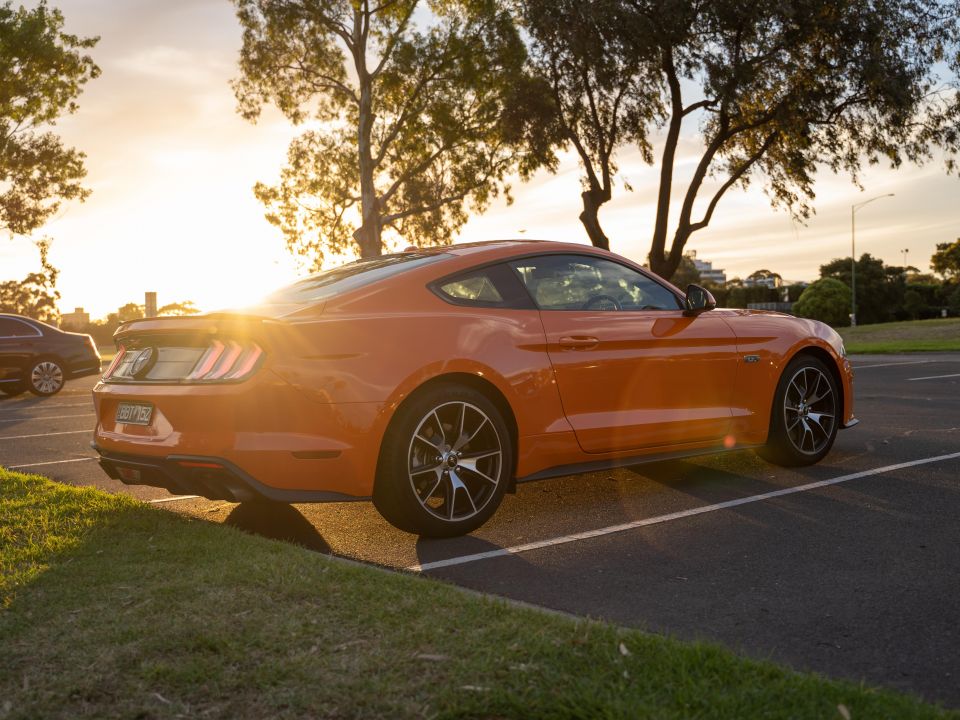
Around town the four-cylinder turbo and 10-speed auto work together to make everyday commuting a smooth, refined experience. We found the number of ratios the transmission has to shuffle through at times made it feel like a CVT – and watching the driver’s cluster you’ll see it shifts from first, to third, to fifth, to eighth.
Depending on the exhaust mode you can get as much or as little engine note as you like for the everyday commute, meaning you can have your ‘Stang sounding a bit like an angry hot hatch or quiet and refined if that’s more to your liking.
The steering is a bit on the heavier side, and the huge bonnet and tiny mirrors make tight manoeuvres a bit of a chore, but the comfortable ride and relatively quiet cabin make the Mustang a very liveable daily. It’s no wonder you see so many of these things on the road, even in peak-hour traffic.
Ford has fitted a slew of driver assist technologies too, namely adaptive cruise and lane-keep assist, which help a lot when commuting in traffic. The beefy B&O Play system and standard smartphone mirroring also help to keep you entertained on the move.
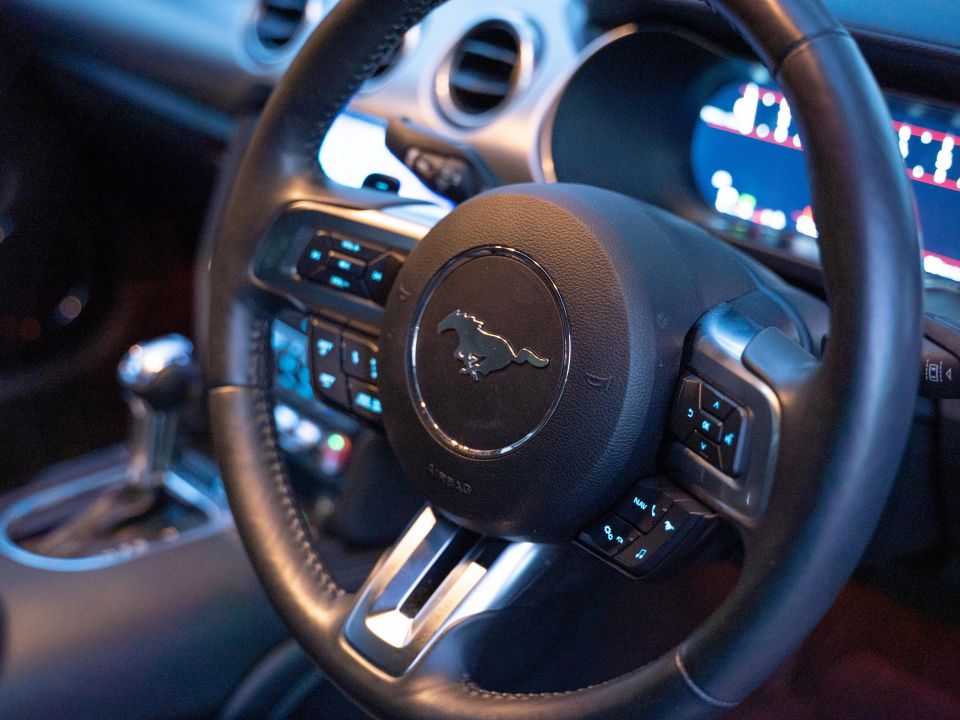
Get out of the city’s confines and the Mustang 2.3L High Performance proves it’s a bit of fun when you can stretch its legs.
With the smaller engine up front the four-pot ‘Stang feels more eager turning in than its V8 sibling, though at 1716kg (kerb) it’s not that much lighter than the auto-equipped GT Fastback (1784kg kerb).
The Mustang handles well, with well-managed roll and direct, communicative steering as noted earlier, bolstered by good grip levels from the Pirelli P Zero Corsa rubber (255/40 R18 front and rear). However, the huge steering wheel and long nose sometimes makes it feel like you’re piloting a speed boat rather than a sports car.
There’s also no escaping that the Mustang is a big, heavy muscle car at the end of the day, so don’t expect MX-5 levels of sharpness.
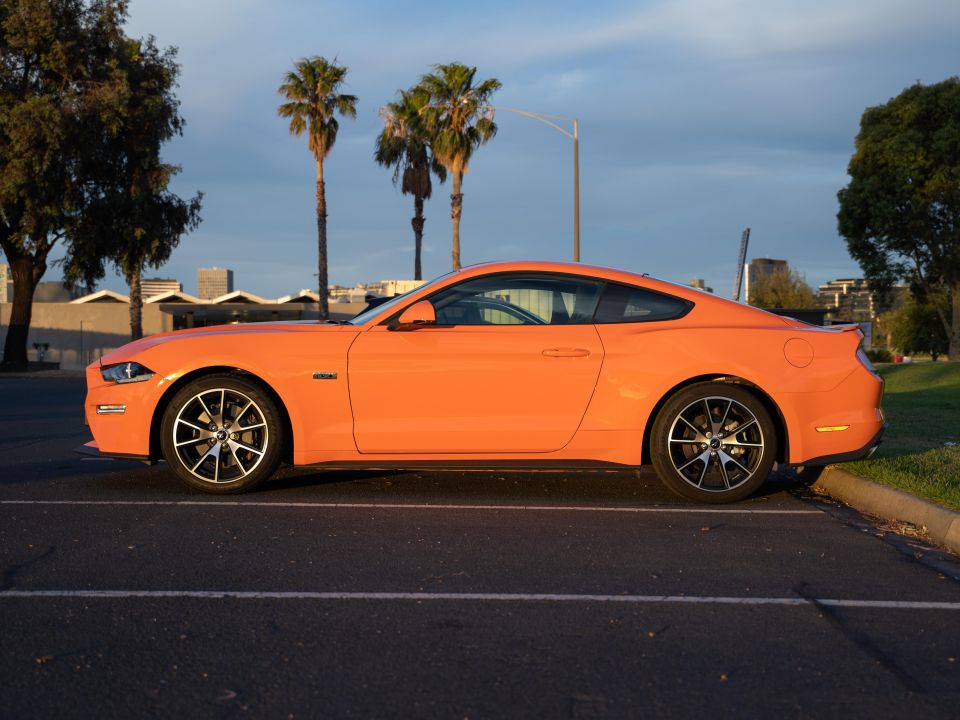
Where expert car reviews meet expert car buying – CarExpert gives you trusted advice, personalised service and real savings on your next new car.
Regardless, it’s quite a bit of fun to punt up a winding B-road. Flick the transmission into Sport and use the steering-mounted paddles and you can really rev out the 2.3-litre turbo and make it sing for its supper.
Yes, the 2.3 lacks the bassy soundtrack and high-end pull of the V8, but the High Performance feels like more of a sports car than the brutish GT, and is more than quick enough for most people.
In more focused driving the 10-speed auto feels better suited to the Mustang’s character when using the paddles, as you’ll likely be using gears two to six rather than all the way up to tenth. Personally, I still prefer the six-speed manual.
Beware that, like the V8, the 2.3-litre Mustang is very happy to kick its tail out under hard acceleration, particularly in the wet. Keep throttle inputs progressive out of a corner and you’ll avoid that heart-stopping moment.
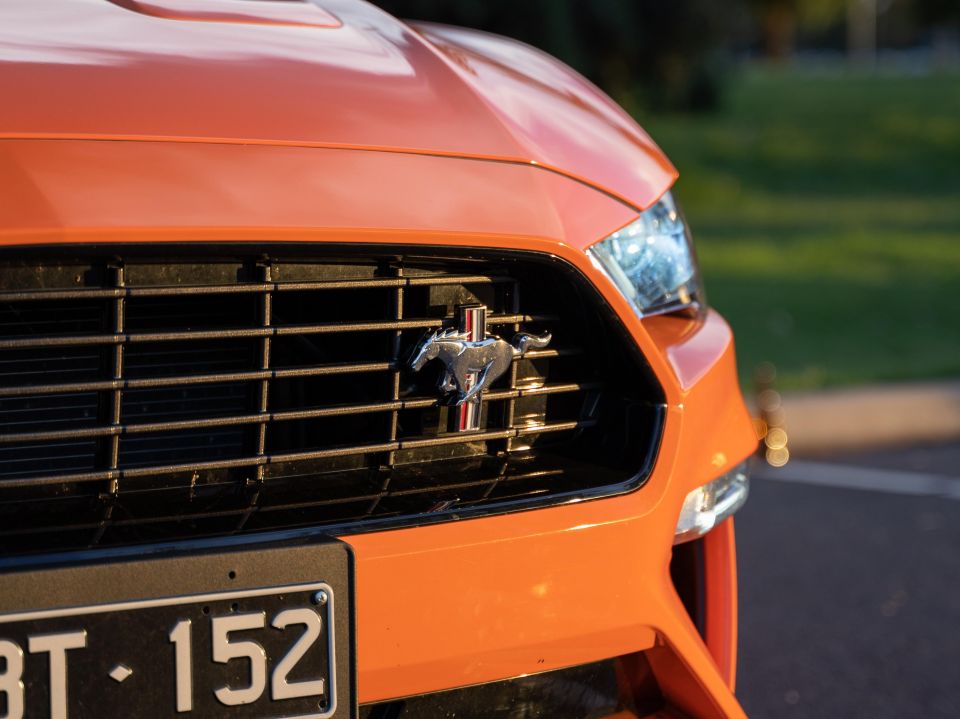
The Mustang also proved to be a capable tourer. We spent plenty of time on the freeway during our week with the four-cylinder ‘Stang and were impressed with the long-distance comfort and refinement the Pony car offered.
Last year I drove a Mustang 2.3L HP manual from Melbourne to Adelaide which was a lot of fun.
The aforementioned driver assist tech took the chore of speed management off my hands and it was surprisingly comfortable over such a long journey over some more coarse-chip country highways. High-speed stability and road holding were likewise impressive.
Fuel economy also isn’t bad on the open road either. I made it from Melbourne to Tailem Bend (more than 650km) on one tank.
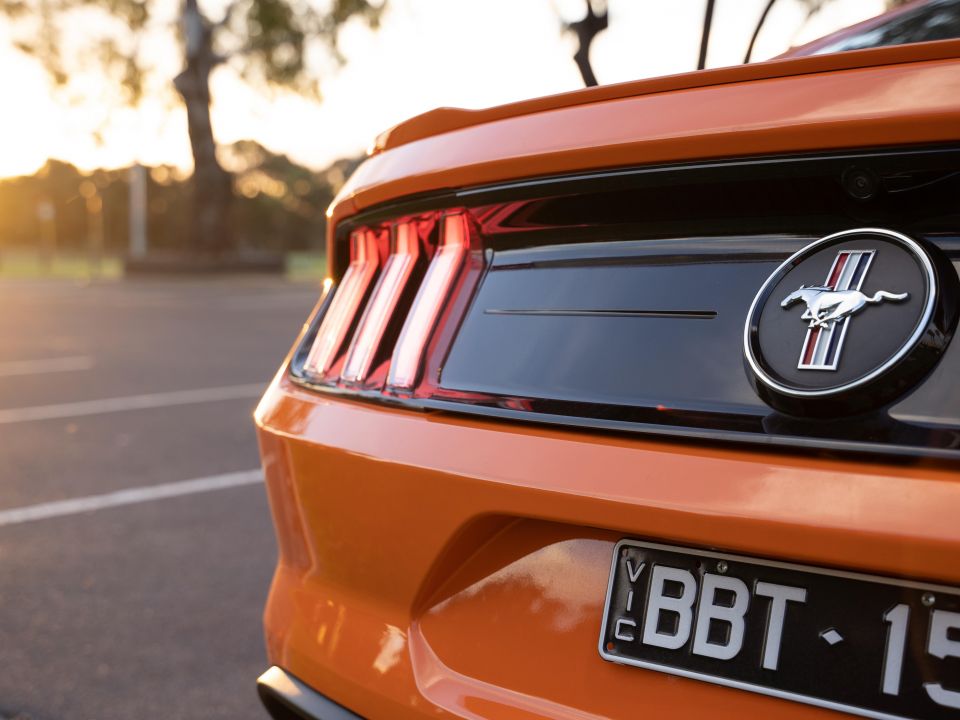
Ford covers its line-up with a five-year, unlimited-kilometre warranty.
There’s four years of capped-price servicing – at $299 a pop – with scheduled maintenance intervals of 12 months or 15,000 kilometres, whichever comes first.
You also get access to the Ford Service Benefits program, which includes roadside assistance via state auto club membership for up to seven years, annual navigation map updates for up to seven years, access to a loan car every time you get a service, and more.
From an ownership perspective, there’s not a lot to complain about.
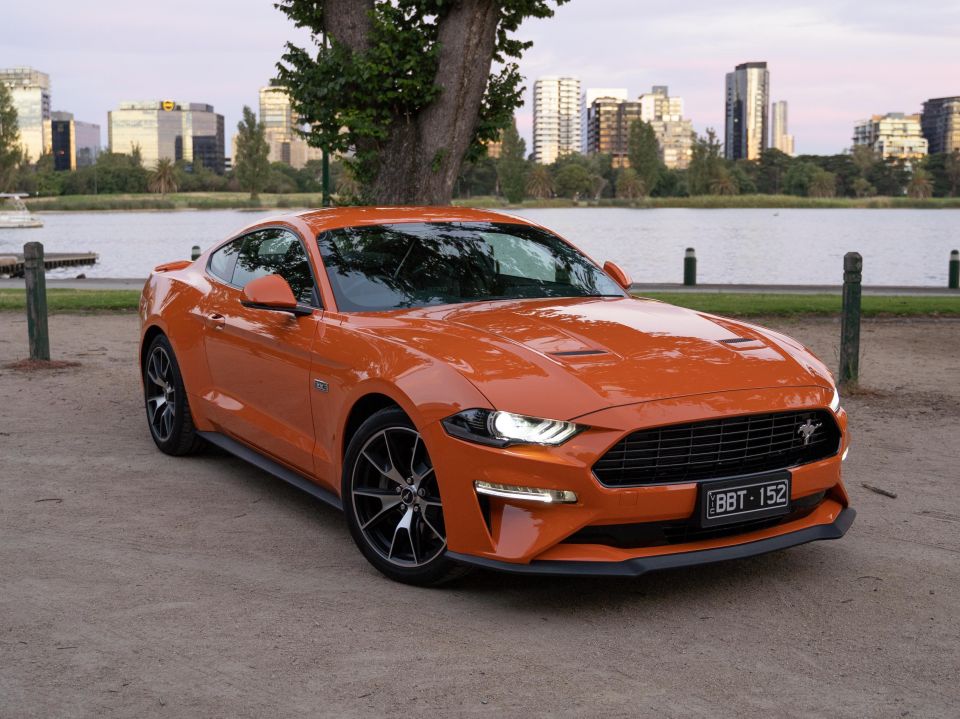
The four-cylinder Mustang is an interesting proposition, and it’s seriously worth your consideration.
It’s fast enough, looks good enough, has enough equipment, and drives well enough to satisfy 90-95 per cent of your sports car needs. While some will scoff at the idea of a four-cylinder Mustang, it’s definitely not a $13,000 inferior car to the GT.
For the more practically-minded, the 2.3L High Performance is the better everyday sports car in the sense it has the looks and feel of a Mustang with significantly lower fuel use and better value for money than the V8.
I get it, though. If I personally was in the market for a Mustang I’d probably go the GT as well because, well, it’s a Mustang.
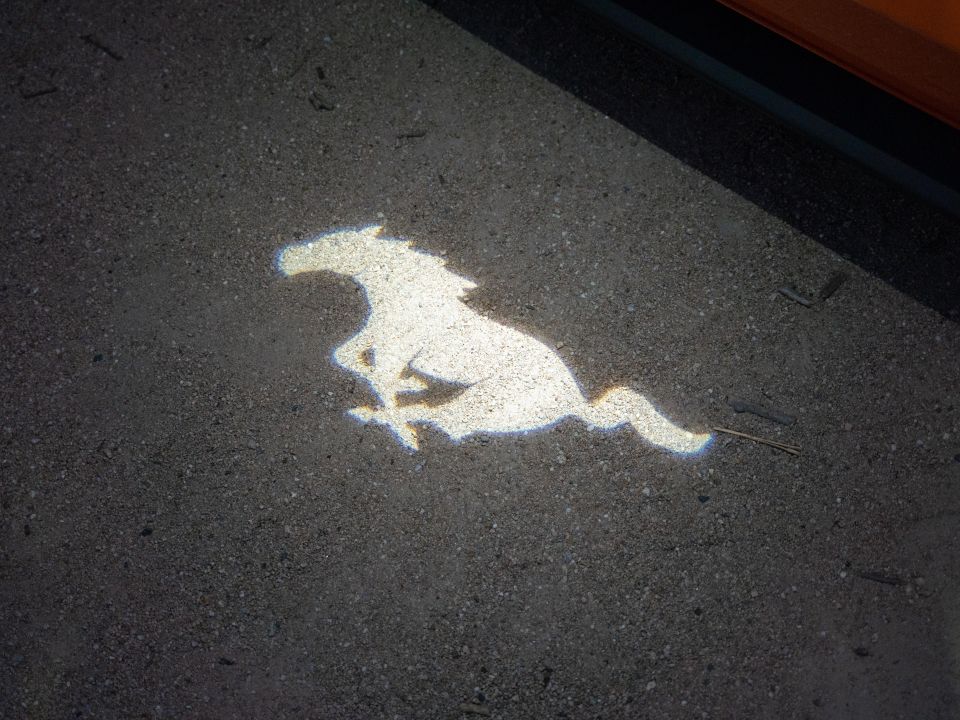
Click the images for the full gallery by Wesley Loh (@garagetribe on Instagram)
Where expert car reviews meet expert car buying – CarExpert gives you trusted advice, personalised service and real savings on your next new car.
James Wong is an automotive journalist and former PR consultant, recognised among Australia’s most prolific motoring writers.


William Stopford
5 Hours Ago
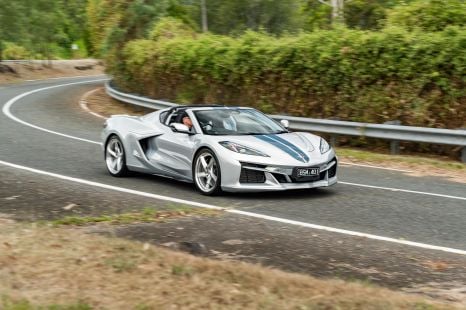

CarExpert.com.au
3 Days Ago
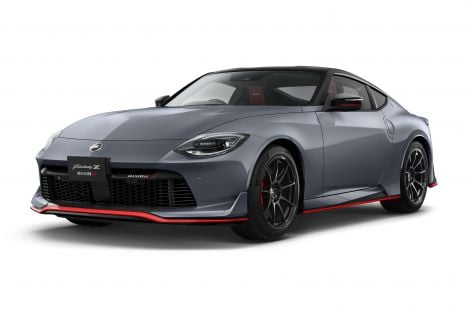

Derek Fung
7 Days Ago
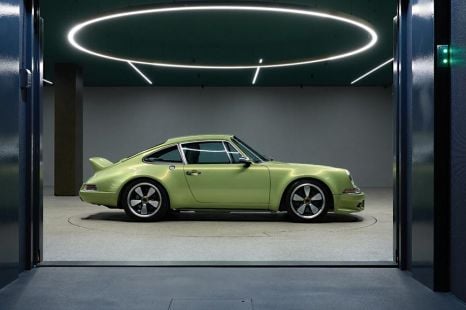

Marton Pettendy
23 Days Ago
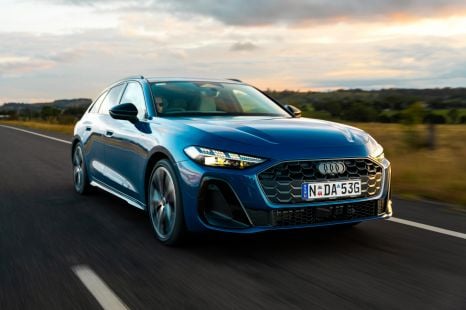

James Wong
1 Month Ago


Damion Smy
1 Month Ago